Prague’s main railway station is a building with two very different faces: on one side there is the old, twin-towered and richly decorated Art Nouveau building, and on the other side there is the retro high-tech steel and glass structure from the 1970s.
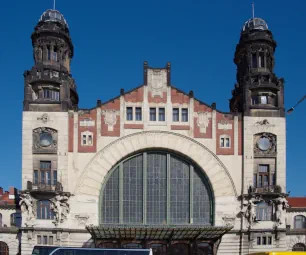
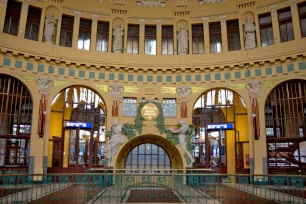
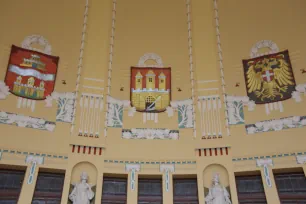
Most visitors only pass through the modern building, which gives direct access to the metro station and which is connected to the platforms via underpasses. That’s a shame, because the historical building is definitely a gem of Art Nouveau architecture worth visiting.
The Historical Railway Station
The Fanta Building
The historical Art Nouveau building on Wilsonova Street was built between 1901 and 1909 after a design by Josef Fanta. That’s why this building is known as the ‘Fanta Building’. It was constructed at the site of an earlier Neo-Renaissance building that opened in 1873 as Franz-Josef Station, after Emperor Franz-Josef I. This station, which was nicknamed ‘Castle Station’ because of its large towers, had become too small for the increasing railway traffic, so an architectural competition was launched for the construction of a new, larger building.
The winner was Czech architect Josef Fanta, who created a stunning design in the then-popular Art Nouveau style. The focal point is the central, domed departure hall, which contained the ticket offices. It is flanked by two glass-domed towers. On either side of the departure hall are long side wings, which housed luxurious restaurants and waiting rooms. At the end of each wing stand four-story pavilions. The building was richly decorated, both inside and on the facade, with stucco and sculptures created by some of the leading Czech artists of the time.
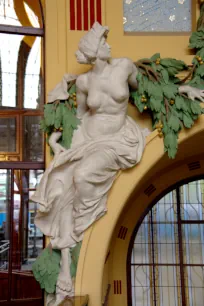
In the 1970s, the construction of a new station terminal and an arterial road right above that terminal, meant that the railway station became cut off from its surroundings, so passengers started using the new entrance with convenient underpasses instead. The Fanta building was only saved from demolition thanks to its status as a protected building. But the now deserted building became neglected and by the 1990s started to become dilapidated. Fortunately, the Art Nouveau station was restored in the 2010s and life has trickled back thanks to the opening of some cafés and stores.
The Train Shed
The train shed was built around the same time as the Fanta Building. It consists of two arched bays, each measuring 233 meters long and 18 meters high. The steel and glass structure was designed by Jaroslav Marjanko and Rudolf Kornfeld. It only covers the first four platforms of the railway station. The other platforms are covered by a more recent construction.
The Modern Building
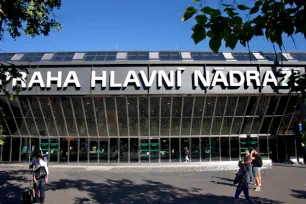

As early as in the 1950s, plans were drawn up to enlarge the railway station and to incorporate a future metro station. Plans from the 1960s even called for the demolition of the Fanta Building. In 1970 an architectural competition for a new check-in hall took place that was won by a collective of three architects. This plan formed the basis for the new station. It called for a two-story terminal building with a glass facade that provided access from the park in front of the station.
The new terminal was built between 1973 and 1979 and integrated the by then already-built metro station. A wide north-south road was built on top of the new terminal and cut off access to the old station. Underpasses provide access from this terminal to the platforms. Glass towers, including two in front of the entrance, connect the terminal with car parking on the roof of the entrance hall. The entrance hall measures 120 by 50 meters and is unique in its colorful 1970s-style application of materials such as the black-and-white striped granite paving, the ceramic tiling on the walls and the bright red ceiling and exposed conduits.

